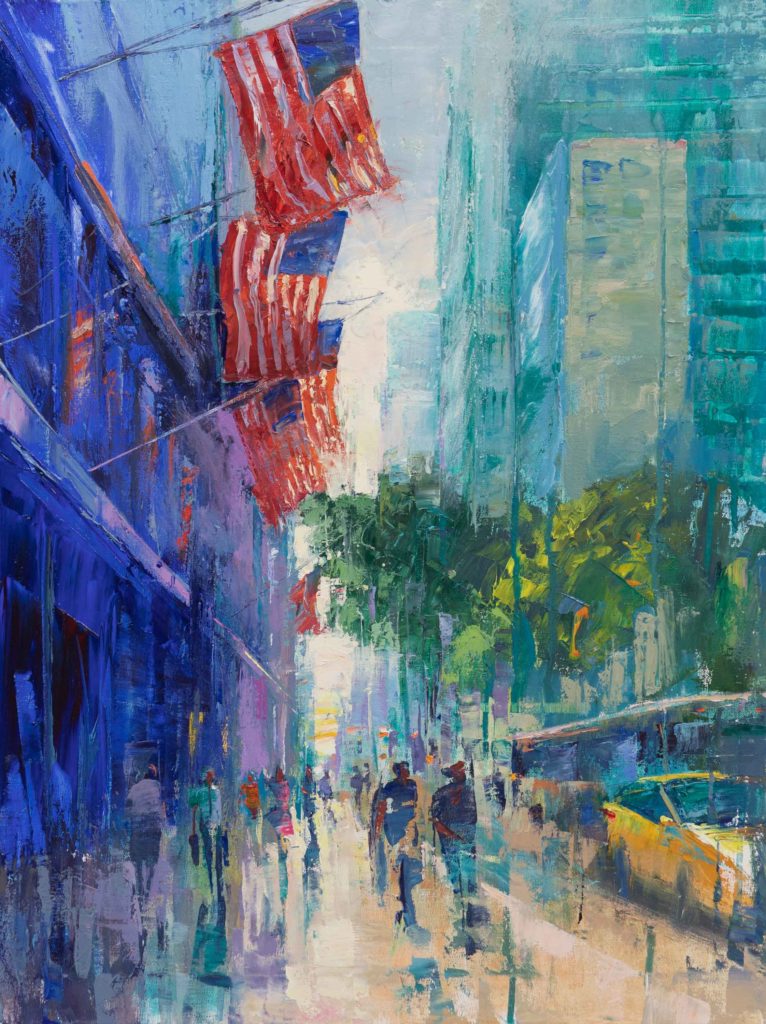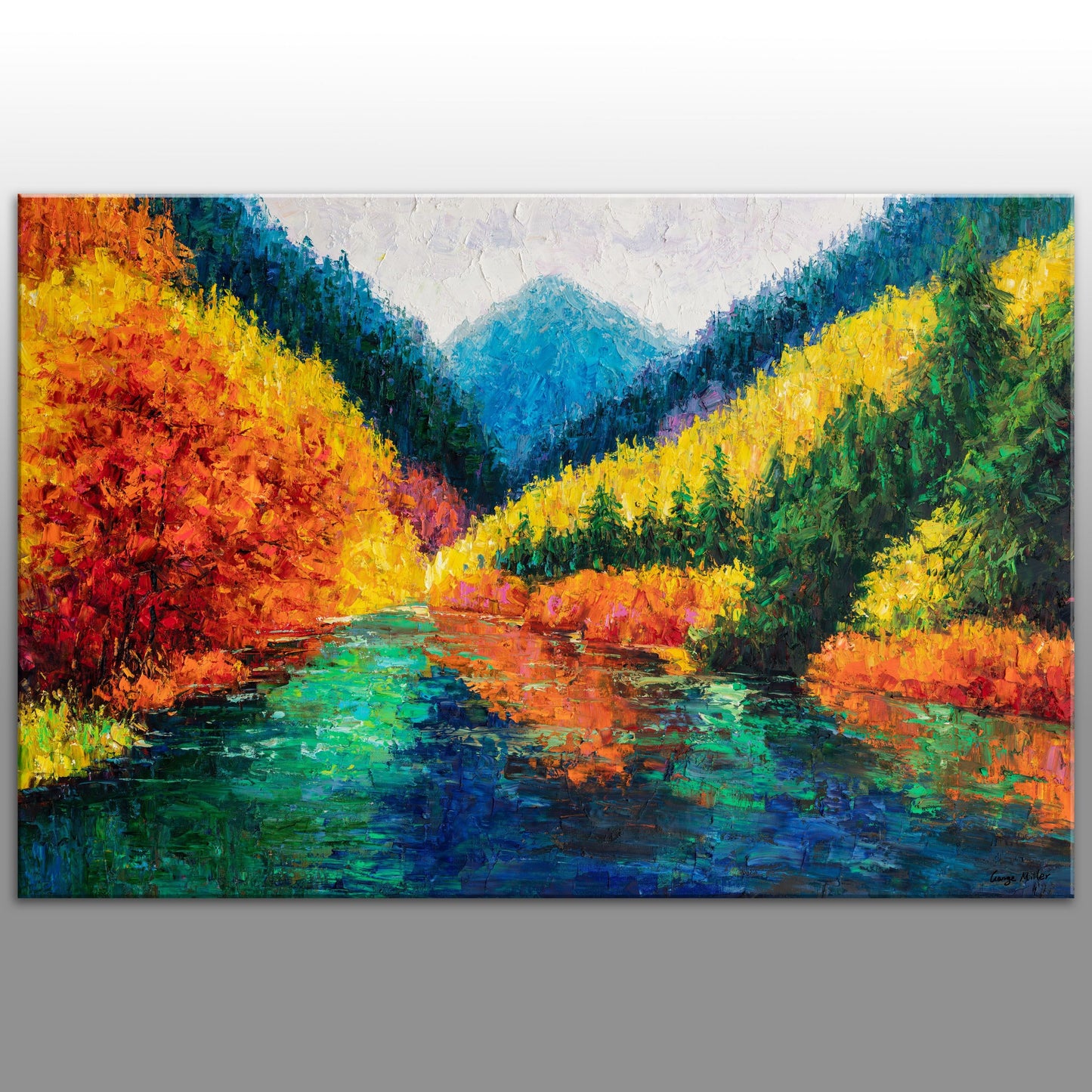Inspiring Home Art Ideas with Oil Paintings for Sale
Checking out Everything About Oil Paintings: An Overview to Understanding Their Charm and Value
Oil paints have astounded target markets for centuries, using a look right into the artistic mastery of numerous eras. Their rich background is intertwined with cutting-edge techniques and extensive emotional expression. Comprehending the products and techniques behind these art work can enhance gratitude. Additionally, the market for oil paints provides possibilities for enthusiasts and capitalists alike. As one explores this remarkable world, the inquiry develops: what makes an oil paint truly important?
The Background of Oil Paint: A Trip With Time
Oil paint has origins that date back to ancient times, it genuinely flourished throughout the Renaissance, when musicians uncovered its versatility and abundant color possibility. Early examples can be mapped to the 7th century, with methods developing especially throughout societies. The medium became popular in Northern Europe in the 15th century, specifically through the works of artists like Jan van Eyck, who spearheaded its usage for thorough realism and vibrant tones. This period marked a separation from tempera paints, permitting for higher depth and structure. As oil painting spread, it influenced many artists, leading to work of arts by renowned figures such as Leonardo da Vinci and Rembrandt. The medium's tradition proceeds, forming the art world well into modern times.
Recognizing Oil Paints: Materials and Techniques
As artists check out the globe of oil paints, they come across a diverse selection of materials and methods that specify this tool. The main parts of oil paint consist of pigments, which supply color, and drying oils, such as linseed, that bind the pigments and promote application. Different additives can customize the paint's appearance and drying time, improving versatility. Techniques like glazing, where transparent layers are accumulated, and impasto, which includes applying thick paint, enable for different visual impacts. Furthermore, using brushes, scheme blades, and also fingers can produce special structures and finishes. Comprehending these methods and materials enables artists to fully reveal their creativity and accomplish the desired impact in their artwork.
The Role of Shade in Oil Paints
Shade plays an essential function in oil paintings, affecting both aesthetic appeal and psychological vibration. Understanding color concept fundamentals, consisting of the connections between tones, can boost a musician's ability to communicate state of mind and atmosphere. In addition, grasping color blending techniques enables higher deepness and splendor in a paint's combination.

Color Theory Basics
Comprehending color theory is important for artists collaborating with oil paints, as it creates the foundation for creating visually interesting and unified structures. Color concept incorporates the research study of how shades connect, the color wheel, and the connections in between key, secondary, and tertiary colors. Artists use corresponding shades to improve contrasts and develop centerpieces, while comparable colors advertise unity and cohesiveness within an item. In addition, the concepts of great and warm shades affect the perception of deepness and space in a painting. Understanding these concepts enables artists to control color properly, directing the viewer's eye and interacting their intended message. Proficiency of color theory inevitably enhances a musician's capability to share emotions and concepts through their work.
Psychological Impact of Color
The psychological impact of shade in oil paintings plays a vital role in just how viewers view and connect with artwork. Shades stimulate particular sensations and state of minds, influencing the customer's mood. As an example, warm shades like oranges and reds can create a sense of heat and power, while amazing tones such as blues and environment-friendlies typically stimulate calmness or self-questioning. Artists purposefully choose color combinations to improve narrative components, leading the audience's emotional journey. The saturation and contrast of colors even more magnify these results, attracting focus and developing focus. Inevitably, the interaction of shades in oil paints not only enhances their aesthetic appeal but also acts as a powerful medium for emotional expression, enhancing the audience's experience and interpretation.
Color Mixing Techniques
While many aspects of oil painting contribute to the overall make-up, understanding shade blending methods is necessary for accomplishing preferred impacts and depth. Color blending can be come close to via numerous approaches, including the subtractive and additive processes. Additive mixing involves incorporating shades of light, while subtractive mixing counts on pigments, where shades mix to create brand-new tones. Artists often utilize a limited scheme to create harmonious jobs, comprehending the partnerships in between main, additional, and tertiary shades. Strategies such as glazing and scumbling additionally enhance depth and luminosity. By skillfully mixing shades, a musician can stimulate feelings, produce prime focus, and accomplish a sense of realistic look, inevitably elevating the painting's aesthetic and psychological impact.
Famous Oil Painters and Their Iconic Works

Famed for their mastery of color and strategy, oil painters have produced several of one of the most well known artworks in background. Prominent artists like Vincent van Gogh mesmerized target markets with his stirring brushwork in "Starry Evening," while Claude Monet's "Impact, Dawn" laid the foundation for Impressionism. Leonardo da Vinci's "Mona Lisa" stays an enduring symbol of imaginative brilliant, showcasing his skill in capturing human expression. At the same time, Rembrandt's "The Evening Watch" shows his cutting-edge use light and darkness. Other remarkable figures consist of Pablo Picasso, who changed modern art with his bold experimentation in works like "Les Demoiselles d'Avignon," and Georgia O'Keeffe, whose vibrant representations of flowers and blog landscapes helped define American innovation. Each musician's special design added substantially to the oil paint landscape.
How to Assess the Quality of an Oil Paint
Evaluating the top quality of an oil painting entails a careful evaluation of craftsmanship methods, along with an evaluation of color and structure. Observing brushwork, layering, and the application of paint can expose the musician's ability level. Additionally, the interplay of shades and the general arrangement of elements contribute substantially to the painting's visual value.
Evaluating Workmanship Strategies
A careful assessment of workmanship strategies is crucial for establishing the quality of an oil paint. Evaluators should first examine the application of paint; thick, textured brushstrokes may recommend an experienced hand, while excessively consistent applications can suggest an absence of depth. oil paintings for sale. The layering method is additionally important; the visibility of lusters and differed thickness can improve luminosity and intricacy. Furthermore, the high quality of the products used, such as the canvas and pigments, plays a considerable role in toughness and general visual. Attention to detail in elements like edges and changes in between colors reflects the artist's commitment to their craft. Eventually, these methods add to the paint's emotional influence and market value, functioning as signs of the musician's ability and intent
Evaluating Shade and Make-up
While examining the high quality of an oil painting, one have to concentrate on the interplay of color and make-up, as these elements are essential to the art work's overall effect. Color options can develop and stimulate emotions state of mind; for that reason, the musician's combination ought to be taken a look at for harmony and contrast. A well-balanced make-up directs the visitor's eye and produces a sense of unity. Artists frequently employ methods like the policy of thirds or leading lines to improve visual rate of interest. In addition, making use of light and shadow can add deepness, enhancing the three-dimensionality of the painting. Inevitably, a successful oil paint marries color and structure, engaging the customer and welcoming a much deeper admiration of the artist's vision and method.
Caring for and Preserving Oil Paintings
Appropriate care and preservation of oil paints is necessary for keeping their stability and durability. To protect these art work, it is essential to display them away from straight sunshine, which can create fading and discoloration. Maintaining a stable environment with regulated temperature and moisture more aids in stopping damage. Cleaning should be done delicately making use of a soft, completely dry cloth, preventing any kind of harsh chemicals that can damage the paint or varnish. Routine inspections for indicators of wear and tear, such as flaking or fracturing, are suggested. When storing or carrying oil paintings, correct padding and framework are required to prevent physical harm. Ultimately, persistent care adds to the visual charm and value of oil paintings gradually.
The Marketplace for Oil Paints: Spending and collecting
Comprehending the marketplace dynamics for oil paintings is important for collectors and capitalists alike. The value of these art work is affected by numerous aspects, including the musician's credibility, historical importance, and existing patterns. Collection agencies commonly seek pieces that resonate directly while thinking about possible gratitude in worth. Auctions and galleries work as primary locations for acquiring and marketing, with costs rising and fall based on demand and rarity. Purchasing oil paints requires study into the market, in addition to an understanding of credibility and provenance. Furthermore, emerging musicians might supply chances for substantial returns, while browse around here established names can regulate high prices. On the whole, a tactical technique to accumulating can generate both aesthetic enjoyment and monetary incentives.

Often Asked Inquiries
What Are the Ecological Influences of Oil Painting Products?
The environmental influences of oil paint products include the release of unstable organic substances (VOCs), unsafe waste generation, and source removal for pigments. These factors contribute to pollution and eco-friendly destruction, elevating worries among ecologically aware artists and consumers.
Exactly How Do Various Canvases Impact Oil Painting Results?
Various canvases affect oil painting results considerably. Absorbency, texture, and surface area quality can alter paint application, drying out times, and shade vibrancy. Musicians commonly select particular canvases to attain desired results and boost their imaginative expression.
Can Oil Paintings Be Recovered if Damaged?
Oil paintings can without a doubt be restored if damaged. Expert conservators use various techniques to fix rips, tidy surface areas, and address staining, making sure that the art work preserves its original beauty and worth for future generations.
What Are the Indicators of an Original Oil Painting?
The indications of an original oil painting consist of noticeable brush strokes, texture variants, and an uneven canvas weave (oil paintings for sale). Additionally, authenticity may be confirmed through provenance, signatures, and the presence of a varnish layer special to oil mediums
How Has Technology Influenced Modern Oil Paint Techniques?
Modern technology has greatly affected contemporary oil paint strategies home by introducing digital tools for preparation, enhanced products for appearance and long life, and online platforms for sharing and marketing art, consequently increasing artists' innovative opportunities and target market get to. Oil painting has roots that date back to old times, it really prospered during the Renaissance, when artists discovered its versatility and rich shade potential. The emotional influence of shade in oil paintings plays an important duty in just how customers perceive and connect with art work. While many facets of oil painting add to the general make-up, mastering shade mixing strategies is crucial for achieving desired effects and deepness. Evaluating the high quality of an oil paint includes a mindful analysis of workmanship strategies, as well as an evaluation of shade and structure. While evaluating the high quality of an oil paint, one need to focus on the interplay of shade and make-up, as these components are basic to the art work's overall influence.